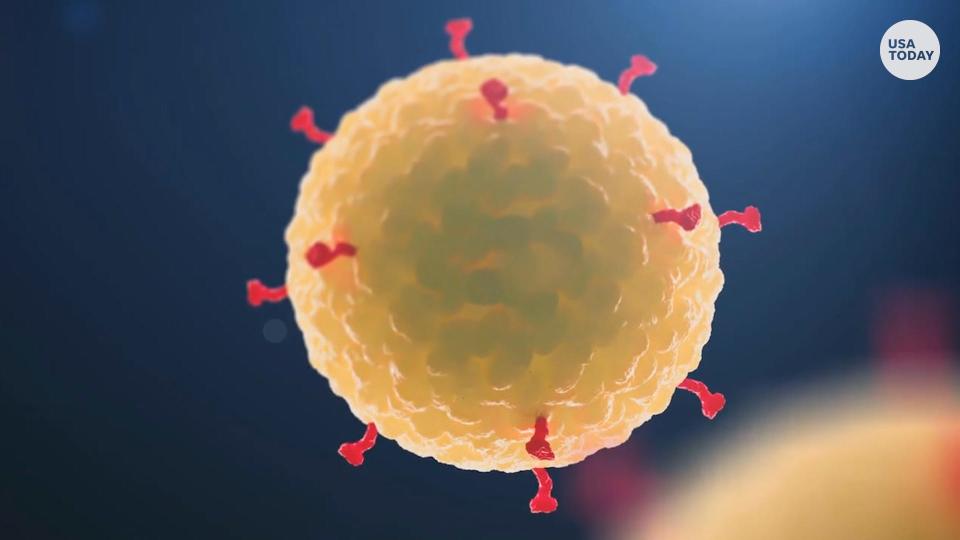Here's how to safely reopen America when coronavirus pandemic wanes
The Problem Solvers Caucus — 50 members of Congress, half Democrats and half Republicans, from across America — has met via video conference nearly every day to debate and govern during the coronavirus pandemic.
In recent days, we’ve turned to a common theme in our Zoom meetings: the health challenges that must be overcome to safely and quickly reopen the country and minimize the economic hurricane coming ashore.
The health and economic rescue package signed into law last week will certainly help people and businesses in the short run. But there is only so long we can go on this way. We are proposing the following framework to provide light in the darkness ahead.
►First, we must ensure the health crisis is safely managed and America is safe enough to re-open. We must objectively demonstrate that our health care system can meet the needs of our people, both day-to-day and in case new “hot zones” develop in the future. To achieve this, we will need mass testing with rapid results, at least 750,000 a week.
We need to test for antibodies, known as serological testing, because if you’ve had the virus, it appears unlikely that you’ll get it again — and you may be able to go back to work safely.
Here’s the good news: In the last week, the Food and Drug Administration is cranking out approvals for large-scale, rapid testing, including ones that can be done in a matter of minutes. This will help us identify “hot spots,” allow us to flatten the curve, and manage the future progression of the virus.

We also need mass production of personal protective equipment, not only for our front-line health care workers and first responders, who are putting their lives on the line to protect us, but also to use in grocery stores, ride-sharing vehicles and others jobs where you have close contact.
Share your coronavirus story: Contact USA TODAY Opinion's hotline to share your experiences and leave messages for front-line workers and others.
Thankfully, large quantities of these items — from masks to gloves — are becoming available every day, but we still face a shortage of ventilators and other essential goods. We need to replenish our Strategic National stockpile at a reasonable level, increase hospital bed capacity to handle another potential outbreak, and add more health care workers — doctors, nurses and technicians — to meet growing demand.
Health care workers need relief
Our front-line health care workers are exhausted and becoming infected themselves. The Federal Emergency Management Agency and the Defense Department are pitching in with medics wherever they can, and retirees are volunteering, but that’s only a temporary fix. We need to mitigate our long-term staffing challenges.
►Second, we must keep our businesses in business to protect the paychecks of workers who desperately need them, and continue to provide unemployment checks to our workforce that has been displaced.
The CARES Act certainly will help, but time is not on our side, especially for small businesses. We may need a fourth emergency package, especially if the virus keeps doors closed longer than expected or if we need to address gaps in our earlier legislation. We may also need longer-term stimulus investment, such as a significant infrastructure package as we have called on for some time.
►Third, we must anticipate the challenges associated with turning the lights back on. We can’t let the pandemic crush one of America’s greatest assets: the collective training, skill-set, grit, know-how and connectivity that has enabled our workers and businesses to flourish. Even with the CARES Act, many of our businesses — small, medium and large — will face a serious liquidity shortage, and with America sequestered, a lack of demand for their products and services.
Rebuild critical supply chains
The COVID-19 outbreak has exposed deep vulnerabilities and highlighted the urgency of shoring up critical supply chains. Over several decades, vital American manufacturing operations have moved overseas — from medical devices and equipment — to pharmaceuticals. Reversing this trend won't be easy. It will take serious policy changes to help reverse it.
►Finally, the current crisis is straining local, state and federal governments far beyond what we initially predicted. The precipitous drop in economic activity has cratered sales tax, income tax and even property taxes, while the demands on government are causing the spending side to balloon. We must help stabilize all levels of government, or it will further threaten the delivery of vital services. Our federal government also will need to figure out a long-term way to debate and vote virtually.
In the end, it’s clear we cannot have a one-size-fits-all approach. It’s important that we assess the threat of the virus region by region and consider reopening in phases or by industry. Denser city populations will have demands that rural America will not, and vice versa. Certain businesses lend themselves easier to social distancing, and others don’t. Regardless of the scenario, the more we plan and execute today, the better off we will be tomorrow.
We must come together, work together and stand together — socially distanced, of course — to put country over political party. That’s the way to beat this virus and the economic storm gathering on the horizon.
Reps. Josh Gottheimer, D-New Jersey, and Tom Reed, R-New York, are co-chairs of the bipartisan Problem Solvers Caucus.
You can read diverse opinions from our Board of Contributors and other writers on the Opinion front page, on Twitter @usatodayopinion and in our daily Opinion newsletter. To respond to a column, submit a comment to letters@usatoday.com.
This article originally appeared on USA TODAY: Planning for end of coronavirus pandemic: Here's how to reopen America

